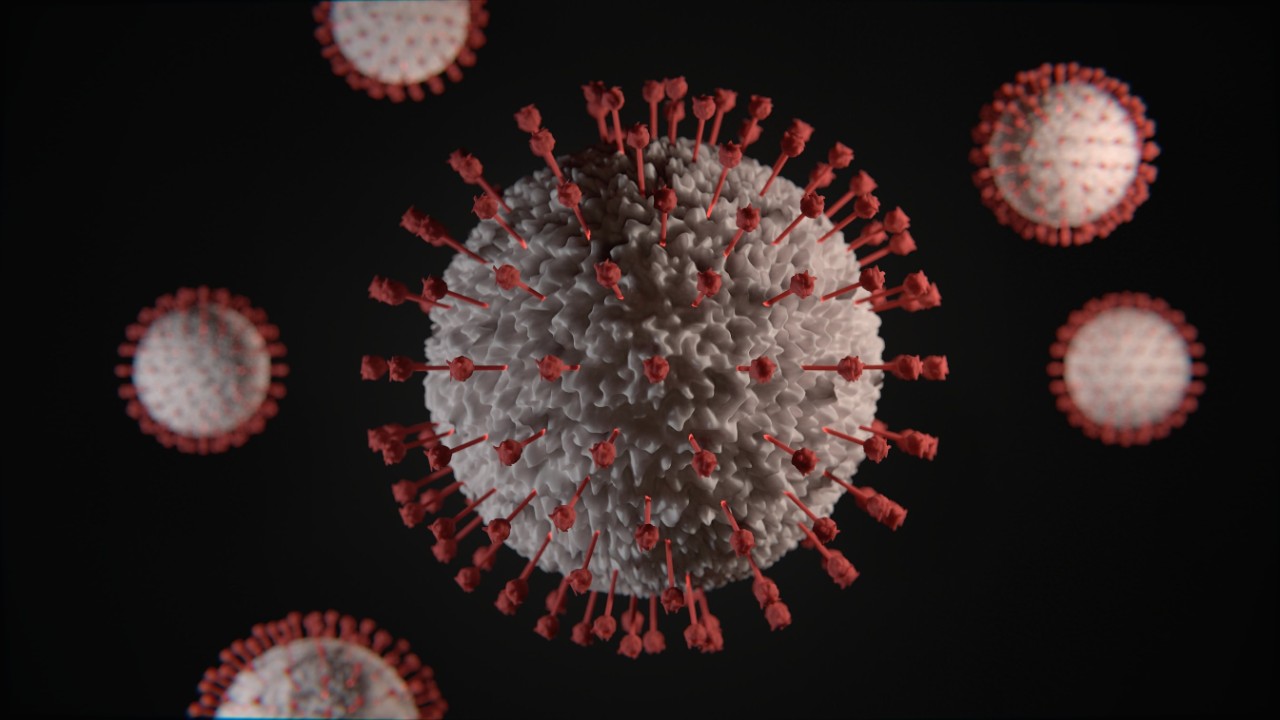
UC researchers uncover clues for COVID-19 treatment
A team of UC and German researchers look at a natural agent as promising therapy for the coronavirus
By examining preexisting research for other conditions, researchers at the University of Cincinnati have found a potential treatment that could be applied to COVID-19.
The findings, published in the Journal of Biological Chemistry, established that a lipid found in the human body could be used to prevent or treat infections with SARS-CoV-2, the virus that causes COVID-19. That lipid, called sphingosine, is a natural element taken from the body and is important in the lipid metabolism of all cells and the local immune defense in epithelial cells, a type of cell that lines the surfaces of the body including skin, blood vessels, urinary tract and organs. They serve as a barrier between the inside and outside of your body and protect it from viruses.
“We investigated whether a specific lipid is able to interfere with the binding of SARS-CoV-2 to human epithelial cells,” says corresponding author Erich Gulbins, MD, a visiting professor in UC’s Department of Surgery. He is also chair of the Department of Molecular Biology at the University of Duisburg-Essen, Germany.

Photo/Colleen Kelley/UC Creative + Brand
“Sphingosine has been shown in past studies to prevent and eliminate bacterial infections of the respiratory tract, but it is unknown if it can be used to prevent viral infections. The coronavirus needs to bind to specific molecules on the surface of human cells as a prerequisite to infect them,” Gulbins says. “This is similar to the key and lock principle of a door: To open the door you must insert the key into the lock. We show that the lipid sphingosine binds into the cellular ‘lock,’ the receptor ACE2, for SARS-CoV-2 and thereby prevents binding of the virus to and infection of human cells.”
Researchers in this study analyzed the use of this lipid in regulating infection in cultured human cells with SARS-CoV-2 particles added.
“We showed that sphingosine prevented cellular infection in these cultures, and pretreatment of cultured cells or freshly obtained human nasal epithelial cells with low concentrations of sphingosine prevented adhesion of and infection with the virus,” says Gulbins.
“These findings indicate that sphingosine prevents at least some viral infection by interfering with the interaction of the virus with its receptor; it could be used as a nasal spray to prevent or treat infections with SARS-CoV-2,” he adds. “The nasal spray must be developed, but sphingosine is a natural product. More research is needed to see if this could be a treatment for COVID-19.”

Co-author Syed Ahmad, MD, co-director of the UC Cancer Center, professor and chief of the division of surgical oncology at UC and a UC Health surgeon, says this collaboration takes medical research from pancreatic cancer studies and applies it to the pandemic, showing true translational science. Photo credit/Colleen Kelley/UC Creative + Brand.
Co-author Syed Ahmad, MD, co-director of the UC Cancer Center, professor and chief of the division of surgical oncology at UC and a UC Health surgeon, says this collaboration is particularly fascinating because it takes medical research from other areas of study and applies it to a timely public health issue.
“The ACE2 receptor has been studied and identified as a treatment target in pancreatic cancer,” says Ahmad, the Hayden Family Endowed Chair for Cancer Research. “This is an example of taking existing research and applying it to COVID-19 science in order to make progress in the field. This is how translational science works.”
Next Lives Here
The University of Cincinnati is classified as a Research 1 institution by the Carnegie Commission and is ranked in the National Science Foundation's Top-35 public research universities. UC's graduate students and faculty investigate problems and innovate solutions with real-world impact. Next Lives Here.
In addition to Ahmad, other co-authors on the study include: Sameer Patel, Gregory Wilson and Michael Edwards (first co-author), University of Cincinnati; Katrin Becker (first co-author), Simone Keitsch, Barbara Wilker, Matthias Soddemann, Anne Gulbins, Alexander Carpinteiro and Elisa Carpinteiro, University of Duisburg-Essen, Germany; Barbara Gripp, Zentrum für Seelische Gesundheit des Kindes-und Jugendalters, Germany; Markus Hoffmann and Stefan Pöhlmann, German Primate Center–Leibniz Institute for Primate Research and University Göttingen, Germany; and Silke Walter and Klaus Fassbender, University Hospital Saarland, Germany. Gulbins has patented the use of sphingosine to treat viral infections.
The study was supported by the German Research Foundation DFG, the German Ministry of Science and institutional funds from the universities of Cincinnati and Duisburg-Essen.
Related Stories
GE Aerospace extends Next Engineers program at UC
January 12, 2026
The GE Aerospace Foundation extended a partnership with UC to administer the Next Engineers program through 2034. The program introduces eighth graders and high school sophomores to careers in engineering.
Microsoft expands its presence at UC
January 12, 2026
Microsoft is doubling down on its commitment to the University of Cincinnati, significantly expanding its workspace and AI skilling center at the school’s 1819 Innovation Hub.
Hoxworth Blood Center honors MLK with annual blood drive, community partnership, bonus for donors
January 12, 2026
Hoxworth Blood Center, University of Cincinnati, is honoring the legacy of Dr. Martin Luther King Jr. by turning his message of service into action. One powerful way to do that is by donating with Hoxworth on MLK Day and helping save patients at local hospitals.
